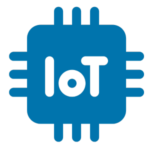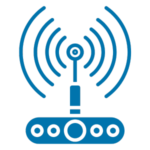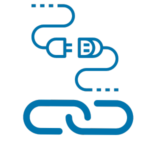-
Pick up from the Stemvolt Store in Kota, Rajasthan
To pick up today
Free
-
Courier delivery
Our courier will deliver to the specified address all over India
3-8 Days
₹79
 STEM DIY KITS
STEM DIY KITS
 DEVELOPMENT BOARDS
DEVELOPMENT BOARDS
 IOT And WIRELESS
IOT And WIRELESS SENSORS
SENSORS MOTORS And DRIVERS
MOTORS And DRIVERS
 ROBOTICS & MECHANICL
ROBOTICS & MECHANICL
 DRONE PARTS
DRONE PARTS
 BATTERIES / POWER SUPPLY
BATTERIES / POWER SUPPLY
 DISPLAY / KEYPAD MODULES
DISPLAY / KEYPAD MODULES ELECTRONIC MODULES
ELECTRONIC MODULES
 ELECTRONIC COMPONENTS
ELECTRONIC COMPONENTS
 CONNECTOR / CABLE
CONNECTOR / CABLE TOOLS And ACCESSORIES
TOOLS And ACCESSORIES


Hurry and get discounts on all Apple devices up to 20%
Sale_coupon_15
₹75.00 (Included GST)
In Stock
In Stock
To pick up today
Free
Our courier will deliver to the specified address all over India
3-8 Days
₹79
Payment Methods:
12V 2Ch Relay Module with Optocoupler is a small and easy to use and subsequently it can be used to control one 240V power appliance directly from Arduino, Raspberry Pi, and other microcontrollers or low voltage circuits. Perfect for switching 240V appliances – lights, fans, etc, and even high power motors at lower voltages.
The board uses a high-quality relay however it can handle a maximum of 7A/250 V AC or 10A/125V AC. Each relay has all three connections Common, Normally Open, Normally Closed markedly brought out to 3 pin screw terminals which can make it easy to make and remove connections. The board has a relay status LED i.e. to ease debugging. The board can accept control inputs within a wide range of voltages undeniably from 4V to 12V.
Relays were first used in long-distance telegraph circuits as signal repeaters they refresh the signal coming in from one circuit by transmitting it on another circuit. Further more the telephone exchanges and also the early computers extensively employed relays to perform logical operations
Also electrical relays got their start in application to telegraphs. American scientist Joseph Henry is often cited to have invented a relay in 1835 in order to improve his version of the electrical telegraph, developed earlier in 1831.However, an official patent was not issued until 1840 to Samuel Morse for his telegraph, which is now called a relay.
1 x 12V 2Ch Relay Module with Optocoupler
Only logged in customers who have purchased this product may leave a review.
 STEM DIY KITS
STEM DIY KITS
 DEVELOPMENT BOARDS
DEVELOPMENT BOARDS
 IOT And WIRELESS
IOT And WIRELESS SENSORS
SENSORS
 MOTORS And DRIVERS
MOTORS And DRIVERS
 ROBOTICS PARTS
ROBOTICS PARTS
 DRONE PARTS
DRONE PARTS
 BATTERIES And ACCESSORIES
BATTERIES And ACCESSORIES
 DISPLAY MODULES
DISPLAY MODULES ELECTRONIC MODULES
ELECTRONIC MODULES
 ELECTRONIC COMPONENTS
ELECTRONIC COMPONENTS
 CONNECTORS AND CABLES
CONNECTORS AND CABLES TOOLS And ACCESSORIES
TOOLS And ACCESSORIES
No account yet?
Create an Account
Reviews
There are no reviews yet.